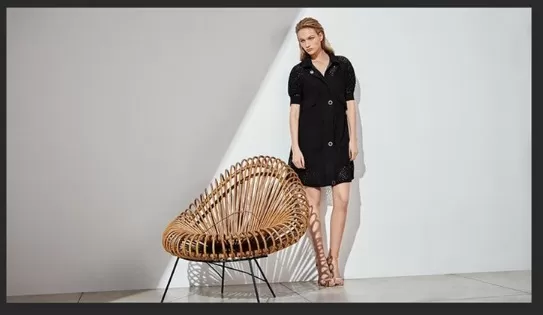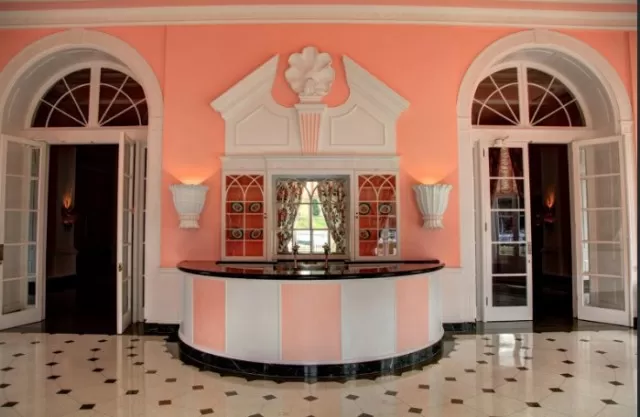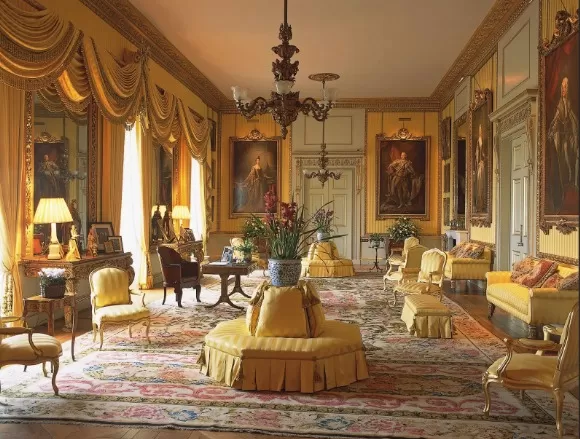Industry-Defining Female Interior Designers. The interior design industry owes much of its vibrancy and creativity to the remarkable contributions of numerous talented women.
Their influence extends across public buildings, businesses, and homes of all scales, transforming spaces and leaving an indelible mark. These trailblazers have not only made significant contributions in the past but continue to shape the industry with their ongoing work. Let’s explore the lives and achievements of some of these inspiring women who have become synonymous with excellence in interior designThese remarkable women, among many others, have significantly impacted the interior design industry, pushing boundaries, and shaping the way we experience the spaces around us. Their unwavering passion, creativity, and dedication continue to inspire aspiring designers and leave an enduring legacy within the field of interior design.
The Visionary Gaze: The Enduring Influence of Female Interior Designers

Throughout history, the interior design industry has often been resistant to the inclusion of women’s perspectives.
Nevertheless, female interior designers have defied societal barriers and made indelible impressions on a wide range of spaces, from grand museums and opulent mansions to cozy cottages, for well over a century. This captivating group of talented women has not only adorned the halls of the White House but has also shattered stereotypes and defied gender norms, revolutionizing the very essence of design and forever altering the course of the entire industry.
Within the pages of this exploration, we delve into the lives and legacies of these remarkable women.
They wielded their artistic prowess, defying expectations and societal limitations, to craft innovative styles that defied convention and challenged established norms. Their unique perspectives and keen eye for detail breathed new life into interior design, enriching spaces with elegance, functionality, and thought-provoking aesthetics.
In this extended edition, we also shine a spotlight on contemporary female designers who, in the spirit of their trailblazing predecessors, refuse to rest on laurels of past accomplishments.
Continually pushing the boundaries of their personal styles, these modern visionaries inject fresh perspectives and imaginative twists into traditional concepts, ensuring that the realm of interior design remains vibrant, dynamic, and ever-evolving.
Join us on this captivating journey as we uncover the captivating narratives of these pioneering women, tracing the evolution of their influence, and celebrating their enduring impact on the world of interior design.
From past triumphs to present-day innovations, “The Eye of the Beholder” offers an inspiring testament to the transformative power of female visionaries in shaping the spaces we inhabit and cherish.
Elsi De Wolfe: Pioneering the Path of Elegance and Simplicity
When exploring the annals of influential female designers, the name Elsi De Wolfe shines with unparalleled brilliance.
Her remarkable career, which began in the captivating world of the stage, propelled her towards a realm traditionally dominated by men. Drawing on her extensive set design experience, she fearlessly ventured into the male-dominated interior design industry, leaving an indelible imprint that continues to inspire and influence generations of designers.
Elsi De Wolfe’s ascent to prominence was undoubtedly aided by her connections within high society circles.
Her ability to navigate these elite realms further elevated her profile, affording her the opportunity to showcase her prodigious talent and unique vision. Embracing an ethos of simplistic airiness and a steadfast rejection of the prevailing Victorian aesthetic, De Wolfe forged her own path, redefining the very essence of interior design in her era.
A true trailblazer, De Wolfe’s legacy lies not only in her own work but in the profound impact she had on the designers of her generation.
Her unwavering dedication to uncluttered spaces and a refined aesthetic left an indelible mark, igniting a movement that challenged the status quo and ushered in a new era of elegance and simplicity. Her influence rippled through the industry, inspiring countless creatives to embrace a more streamlined and modern approach, free from the shackles of ornate and cumbersome design principles.
As we reflect on the formidable contributions of Elsi De Wolfe, we pay tribute to her unwavering devotion to her craft and her audacious spirit in breaking down barriers.
Her remarkable journey serves as a testament to the transformative power of perseverance, talent, and a steadfast commitment to reimagining the possibilities within an industry. Today, her enduring legacy continues to captivate and inspire designers worldwide, reminding us of the timeless allure of simplicity and the profound impact one visionary can have on an entire profession.
Dorothy Draper: Revolutionizing Design with Modern Baroque

The concept of “Modern Baroque” owes its very existence to the visionary genius of Dorothy Draper.
In 1923, a time when women were seldom found working in the design industry and dedicated design firms were virtually non-existent, she fearlessly embarked on her journey as an interior designer, breaking barriers and defying societal expectations along the way. With her unrivaled talent and a distinctive aesthetic, Draper left an indelible mark on the world of design, transforming high-fashion museums, hotels, and restaurants into breathtaking works of art.
Draper’s unique style was a fusion of classical grandeur and contemporary flair, an exquisite balance between opulence and innovation.
By blending elements of the Baroque period with modern sensibilities, she breathed new life into interior spaces, creating an entirely new design language that captivated the imagination of the elite and the masses alike.
While her artistic prowess earned her a place among the most prestigious establishments, it was Draper’s regular column in Good Housekeeping that propelled her designs into the homes and hearts of everyday people.
Through her writings, she shared her insights, inspirations, and practical design tips, allowing her distinctive aesthetic to permeate the lives of countless individuals across the nation. With her infectious passion and relatable approach, Draper democratized design, making it accessible and aspirational for all.
The impact of Dorothy Draper’s pioneering spirit cannot be overstated.
She defied the norms of her time, paving the way for future generations of female designers to thrive in a once male-dominated industry. Her legacy continues to inspire and influence, as her Modern Baroque style remains an enduring source of inspiration for contemporary designers seeking to infuse spaces with a sense of timeless grandeur and contemporary vibrancy.
As we celebrate the extraordinary contributions of Dorothy Draper, we are reminded of the power of a single individual to reshape an entire industry.
Her unwavering dedication to her craft, coupled with her unwavering belief in the transformative power of design, propelled her to the forefront of the design world. Today, her name is synonymous with innovation, elegance, and a profound understanding of the delicate balance between tradition and modernity.
Candace Wheeler: Empowering Women through Artistry and Entrepreneurship
Candace Wheeler, a notable figure in the 19th-century feminist movement, played a pivotal role in championing women’s rights through her involvement in the world of decorative arts.
While her views were not considered radical for her time, her actions and initiatives left an indelible mark on the landscape of both artistic expression and women’s economic empowerment.
In 1877, Wheeler joined forces with Louis Tiffany, Elizabeth Custer, and John LaForge to establish the Society of Decorative Arts.
This groundbreaking organization provided a platform for women who had been left destitute in the aftermath of the Civil War to showcase and sell their artistic creations. By offering these women an avenue to earn a livelihood from their arts and crafts, Wheeler and her colleagues effectively shattered barriers and challenged the prevailing gender norms that limited women’s opportunities for financial independence.
Wheeler’s contributions extended beyond the realm of advocacy and activism.
As a founding partner in the firm known as Tiffany & Wheeler, she played a pivotal role in the establishment of a venture that would ultimately become the renowned Tiffany & Co. This partnership not only solidified her position as an influential figure in the world of decorative arts but also paved the way for future generations of female entrepreneurs to flourish within a traditionally male-dominated industry.
Candace Wheeler’s legacy is one of resilience, innovation, and empowerment.
Her unwavering commitment to providing women with the means to earn a sustainable income through their artistic talents stands as a testament to her belief in the transformative power of creativity and economic independence. By combining her passion for decorative arts with a tireless pursuit of women’s rights, she forged a path that continues to inspire and resonate today.
As we reflect upon Candace Wheeler’s remarkable contributions, we celebrate her instrumental role in reshaping the artistic and entrepreneurial landscape of her era.
Her enduring impact serves as a reminder that true progress often emerges from the intersection of creativity, advocacy, and a firm belief in the inherent value and capabilities of all individuals, regardless of gender.
Sister Parish (Dorothy Kay Kinnicutt): Fusion of Romanticism and Modernity

Dorothy Kay Kinnicutt, affectionately known as “Sister” Parish after her marriage, embarked on a remarkable journey that would forever leave an indelible mark on the world of interior design.
It was during a transformative trip to Paris that her passion for this creative realm was ignited, sparking a lifelong devotion to crafting captivating spaces. However, it was the financial strain endured during the Great Depression that propelled Parish to establish her own design company, not only to support her family but also to unleash her creative vision upon the world.
Parish’s design philosophy seamlessly blended elements of romanticism with a modern sensibility, an exquisite fusion that resonated with countless individuals seeking both beauty and functionality in their living spaces.
Collaborating with her esteemed business partner Albert Hadley, she refined what would come to be known as the American Country style. This aesthetic, characterized by its simplicity and sophistication, captured the essence of a Timeless Elegance that resonated with a broad audience.
The crowning achievement of Sister Parish’s illustrious career came in the form of her involvement in the Kennedy White House.
Her signature vibrant colors, use of four-poster beds, and incorporation of mattress ticking slipcovers not only adorned the halls of power but also entered the annals of history. Parish’s creative genius transformed the presidential residence, infusing it with a sense of warmth, charm, and livability that resonated deeply with the nation.
As we delve into the captivating narrative of Sister Parish, we are reminded of her remarkable ability to transcend design trends and create enduring spaces that stood the test of time.
Her fusion of romanticism and modernity embodied a distinctively American sensibility, elevating interior design to new heights and captivating the hearts of generations. Her contributions continue to inspire contemporary designers, serving as a reminder that simplicity, sophistication, and a vibrant sense of color have the power to transform even the most hallowed spaces into sanctuaries of comfort and beauty.
The story of Sister Parish is one of resilience, creativity, and a relentless pursuit of artistic expression.
Her legacy endures as a testament to the transformative power of design in enriching our lives and shaping our collective experience of the spaces we inhabit.
*The information is for reference only.